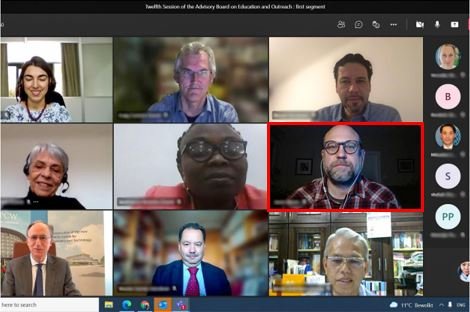https://www.col.org/news/registration-open-for-on-authentic-assessment-for-online-learning/
Authentic assessment is a political act. As the 9 Principles of Good Practice in Assessing Student Learning puts it, “There is a compelling public stake in education. As educators, we have a responsibility to the publics that support or depend on us to provide information about the ways in which our students meet goals and expectations” (Astin, et al.) We have an obligation to ourselves as educators, to the disciplines we care about, and to our students. But we also have an obligation to society to improve our assessment strategies.
I just finished reading Failure to disrupt: Why technology alone can’t transform education (Reich, 2020). Reich argues that “all assessments are imperfectly designed” (p. 177), which means you won’t and can’t develop a perfectly authentic assessment. But it also means we need to pay close attention to how our assessments are imperfect. In online education, more and more people are turning towards online proctoring and/or auto-grading. There are several problems with this. First, surveillance is not good pedagogy. Secondly, autograders are good at routine tasks, but “these are exactly the kinds of task we no longer need humans to do” (p. 171). Third, as Reich states, “we need students to develop complex communication skills and take on unstructured problems,” such as problem finding and problem framing. If we want to assess people on the kinds of performance that are most worthwhile for people to learn, we will have to depend heavily on assessments evaluated individually, and this represents a challenge to large-scale learning environments.
I’ll talk more about exams and essays tomorrow. There are times when they are necessary and occasions when they are authentic, but they are imperfect in very different ways than authentic assessment, and one of their imperfections (as noted by the International Centre for Academic Integrity and the European Network for Academic Integrity) is that they are the assessments students are most motivated to cheat on or can most easily outsource through contract cheating.
Dr. J
Astin, A. W., Banta, T. W., Cross, P., El-Khawas, E., Ewell, P. T., Hutchings, P., Marchese, T. J., McClenney, K. M., Mentkowski, M., Miller, M.A., Morgan, E. T., & Wright, B. D. Nine principles of good practice for assessing student learning. https://www.ncat.edu/_files/pdfs/campus-life/nine-principles.pdf
Reich, J. (2020). Failure to disrupt: Why technology alone can’t transform education. Harvard University Press.








